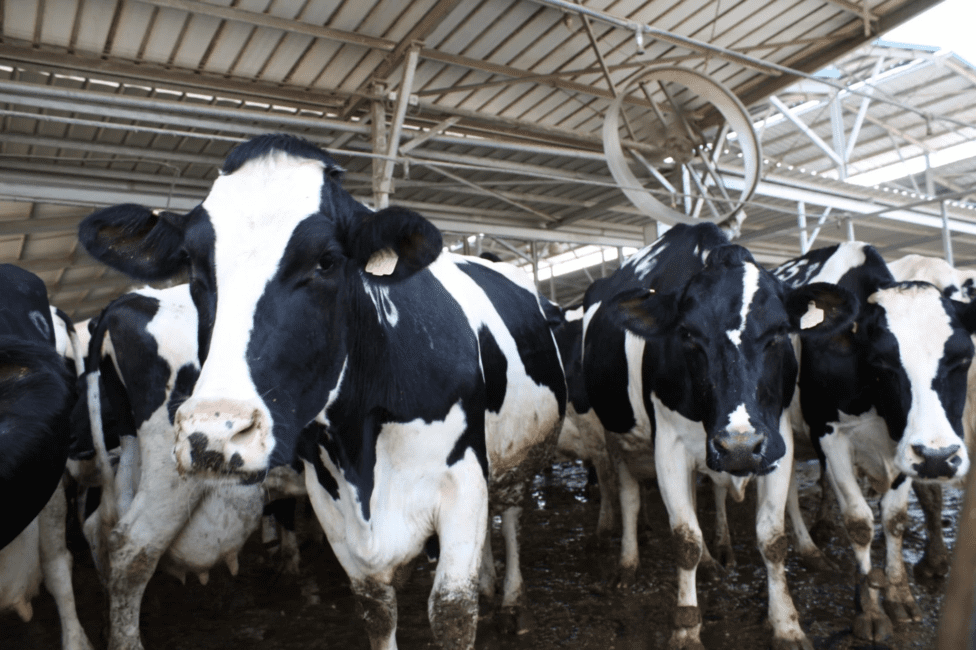Guide to Proper Management of Dairy Cows from Birth Till Maturity
In this article, we will be learning about the management of dairy cows. Diary cattle need to be properly fed and cared for if optimum production of milk is to be achieved: Optimum feeding of dairy animals should be taken seriously as it affects their growth and resistance to disease.
The proper management of dairy animals is essential to obtain a high level of production. Dairy cows react immediately to poor nutrition by a sudden drop in milk production. A good level of sanitation should be maintained to avoid infection as milk is a good medium for the growth of micro-organisms
Management of Dairy Cows from Birth to Weaning
This period is the most critical period for the survival of the calf. This is because at the first stage in life (1st – 6 weeks) the calf is susceptible to many diseases such as scours digestive disorders etc. If proper care is not taken this will result in a high mortality rate.
The calf should be separated from the dam after the first 3-5 days. This period is necessary to allow the calf to obtain colostrums from the dam. The calf should then be fed either concentrate or replace starter diet. Good quality legume hay should be provided at this time alongside concentrate. The number of growers concentrates to be fed depends on:
- The size of the heifer.
- The amount of forage eaten by the heifer.
- The quality of the concentrate.
- Quality for the forage.
Salt lick and plenty of water should be provided. Heifers are normally grouped up to about 1 year. After this period bull heifers should be separated from female heifers to prevent premature mating. Heifers will show signs of heat at 12-15 months of age.
Read Also Grazing or Indoor Feeding: Best Method of Feeding Ruminant Animals
Signs of Heat
This is the period when the female is ready to accept the male.
- Standing still to be mounted
- Restlessness
- Swollen vulva
- Secretion of mucus
- Swelling of the vulva
- Frequent updation
- Monitoring of other animals
- Snipping the urine of other animals
The heat period is better observed between 6 pm to 6 am. The female can be served by a male or through artificial insemination (AI). The pregnancy period is 9 months. In the end, the calf is born.
Management practices such as flushing and steaming up should be carried out. The advantages of such practices have already been outlined in your notes on the breeding management of small ruminants.
Read Also Feeding Materials for Ruminant Animals
Care of Parturition

About 2 weeks to the end of parturition, the pregnant female is taken to a clean, disease-free, well-bedded, comfortable easily observed calving pen. The animal should be left in the calving pen without disturbance. The normal labor period of a cow is 2 hours. If labor is prolonged thereafter and the calf is not yet born, the attention of a veterinarian should be sought.
Signs of Parturition
- Restlessness.
- The vulva relaxes and swells up.
- Enlargement of the udder.
- Mucus discharge from the vulva.
- Sinking of the planks.
- Seek isolation from the flocked.
Heifers normally have a longer parturition period than cows. The placenta should be expelled within 24 hours. The cow should not be allowed to eat the placenta as they do not digest it. This results in stomach upset.
Post-Partum Breeding
The first heat after parturition is observed 35-45 days after calving. This could extend to 50-75 days in matured animals in the tropics. This period is longer because of underfeeding or delayed involution of the reproductive tract.
Feeding is very important during this period as it affects the quantity of milk produced. Usually, animals are fed concentrate rations according to their level of milk production. Animals are also grazed on good quality pasture.
Animals are not to be bred at the first post-factum estrus. The second post-factum occurs 90 days after calving at this time the animal is ready for re-breeding. Animals with problems during parturition should however be left until the third heat period.
Drying the Cow
This refers to the period that the animal is no longer producing milk. The drying period is necessary because:
- It gives animal sufficient rest before the next lactation.
- Allow for repair and regeneration of secretory cells of the udder.
- Improve milk production during the next lactation.
The drying period lasts for 45-60 days. Animals should be fed with good quality concentrate and forage. When the animal is dried the treat must be disinfected. The animal must also be given antibiotics, especially against mastitis. Both internal and external parasites should be controlled and vaccinations carried out against preventable diseases.
Read Also Industrial Waste and their Impact on the Environment









